Hello everyone! Welcome to my page of trees. With the power of my Peterson field guide for trees and shrubs and my phone’s camera, I have gathered an assortment of trees to display, most of which came directly from my backyard! Those that weren’t from my backyard were captured on my field trip to Batelle Darby Creek Park, which I will write more about later.
The location for my backyard is here in NW Columbus, and the habitat type is likely a prairie, which is common to the parks surrounding me. As for Batelle Darby Creek Park, that’s located about half an hour southwest of where I live. That habitat type ranges from forests and prairies to wetlands with a river running through.
This first tree is one of the two red trees found in my backyard. This one is from the Prunus genus (within the rose family) and is a Cherry Plum (Prunus cerasifera) tree. They produce fruit in the summer to fall months, but they are not Ohio native, so they were likely planted by the previous owners as ornamentals. They have distinctive red to yellow leaves that are long and skinny. If you break the bark of some members of this genus, it can have an almond-ish scent, which is from the hydrocyanic acid it contains.
The second of the red trees growing is a Japanese Maple, which sometimes is referred to as a Palmate Maple (Acer palmatum) due to its palmate leaves, and it is a member of the Aceraceae family. Unfortunately, just like the cherry plum tree, these are not Ohio native and were likely also planted as decoration for the previous owner’s yard. Maple trees are our only trees with opposite fan lobed leaves, which is a great tool for identification, and their wood can be used to craft furniture.
The next tree on my list is the White Mulberry (Morus alba) tree, which belongs to the Moraceae family, or commonly called the Fig/Mulberry family. These trees share a common trait of fan-lobed or fan-veined leaves, which help to identify them. I actually have multiple of these trees in my backyard scattered around the area. According to my field guide, these were originally introduced by the British pre-Revolutionary War to establish a silkworm industry which did not succeed.
In the same group of plants with fan-lobed or fan-veined leaves as Mulberries, we can find my Eastern Redbud (Cercis canadensis) tree. These belong to the Fabaceae family, which is also called the Legume family. With pretty heart-shaped leaves, it can have many uses, such as its wood for building and its root for red dye. These are also an exception in the legume family as they don’t grow nitrogen-fixing root nodules (my field guide is truly full of interesting quirks about plants).
Now for a tree with much less leafy leaves, my White Northern Cedar (Arbor vitae) tree, which belongs to the Cupressaceae, or cypress, family, which is a collection of conifers. These trees’ leaves are thin and needlelike and do not shed during winter. It is said to have cured members of scurvy during a Canadian expedition long ago, hence the name ‘tree of life’ in French. I personally just like the smell of conifers and have no desire to taste them; I’ll stick to eating fruits to prevent scurvy. After reading the article about tree blindness by Gabriel Popkin, I definitely feel like my biggest tree blindness it towards conifers; to me, they all look so similar to each other, and they look fairly similar throughout the whole year compared to plants whose leaves change color. This is definitely something I’ll be working on with the help of my field guide.
These last three trees (and shrub) are not from my backyard but are instead from my Darby Creek adventures. With that being said, I have another maple to share with everyone, and fortunately for us it’s an Ohio native! The Sugar Maple (Acer saccharum) is similar to its non-friendly cousin the Norway Maple, but the difference is that its leaf stems are not nearly as long as the Norway’s are. Their flowers typically bloom in the spring and their fruits in the fall when their leaves become a deep red color. These trees are highly valued for their wood and for their maple syrup production.
This second to last plant, though technically a shrub, is included because I thought the flowers were too pretty to exclude. Pictured above is the Southern Arrowwood (Viburnum dentatum), which is part of the arrowwood side of the viburnums. The twigs have a velvety hair to them, and sometimes the undersides of the leaves share this trait too. It has sharply toothed leaves and pretty bunches of small white flowers this time of year. This plant was right outside the first path we took on that field trip, so it was a great start to our adventure.
Last, but certainly not least, to complete my Ohio tree page is the one and only Ohio Buckeye tree, or Aesculus glabara. A beautiful Ohio native tree with its distinctive palmate leaves (the star of this picture) and somewhat off-putting smell when you break its branches. It’s a member of the Sapindaceae family and is in the same order as Maples. O-H!

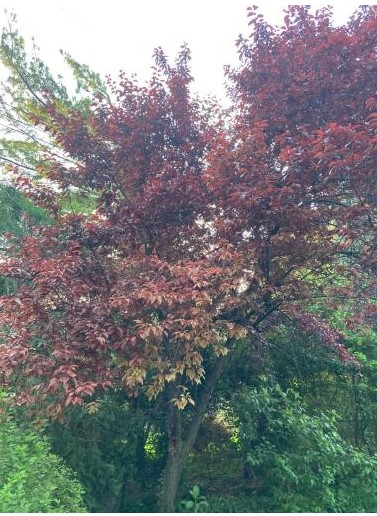
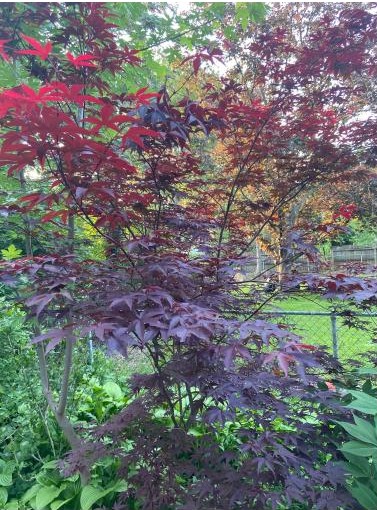
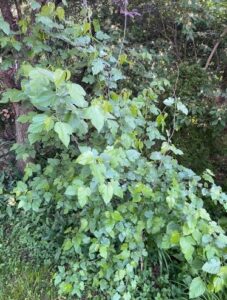
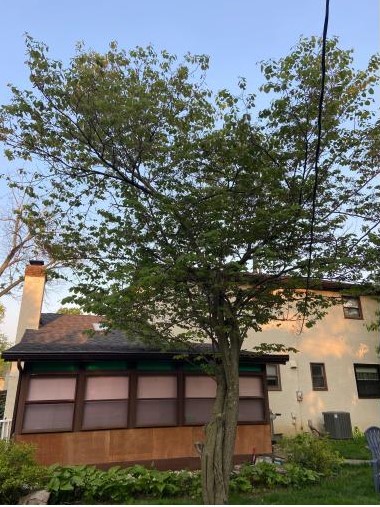
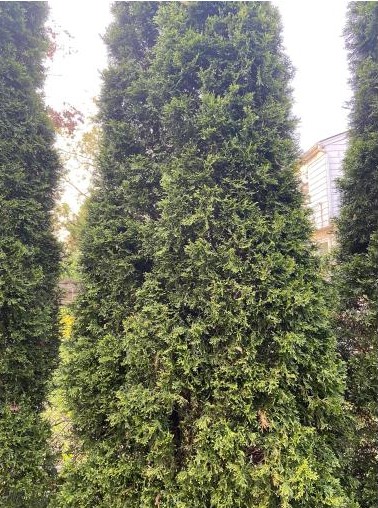
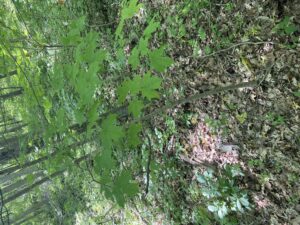
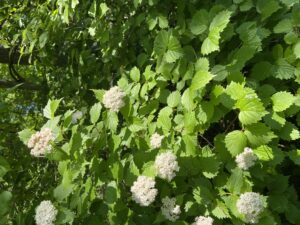
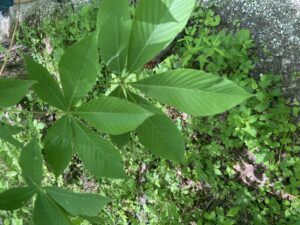
Comments
Trees! — No Comments